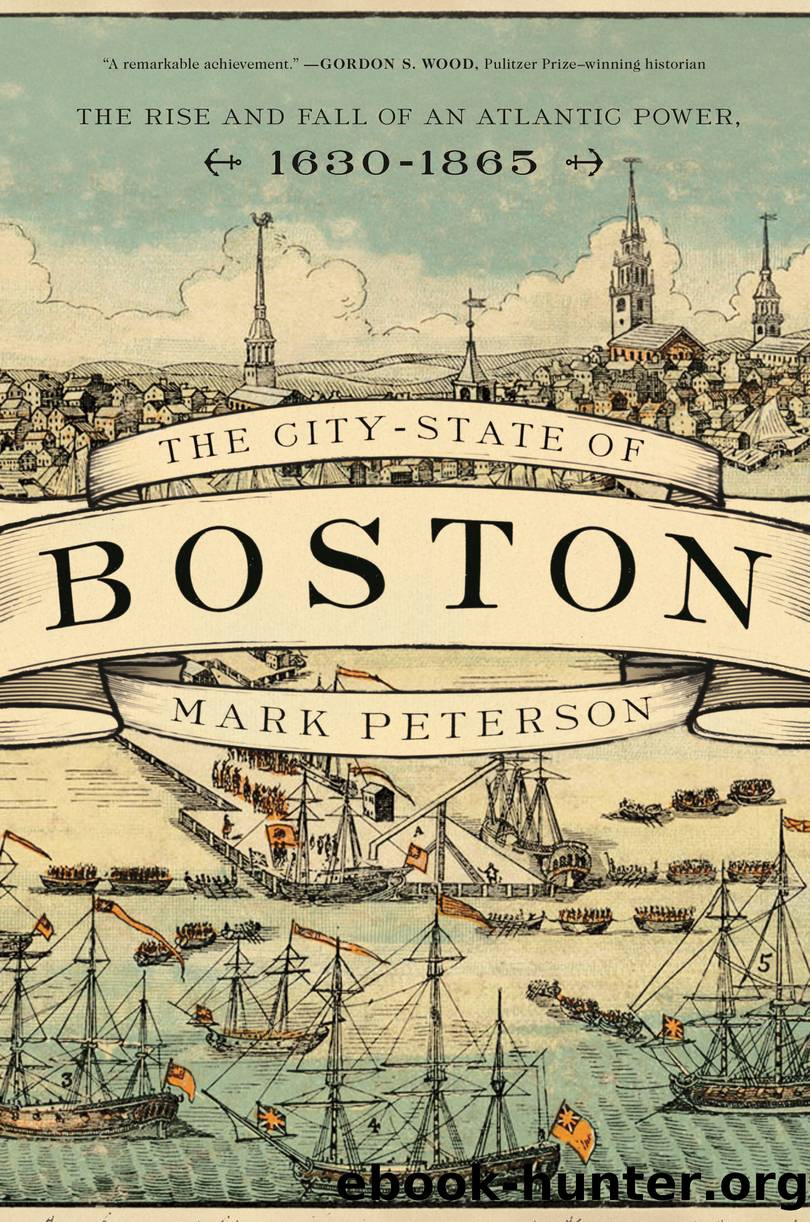The City-State of Boston by Mark Peterson

Author:Mark Peterson
Language: eng
Format: epub
Publisher: Princeton University Press
Published: 2019-02-22T00:00:00+00:00
THE FRENCH REVOLUTION AND GREATER VIRGINIA
During the 1790s, events in France took unpredictable turns. As Bostonians followed these developments, their interpretations of the French Revolution often led them to find connections between its aims and those of their American antagonists. The sectional conflict in American politics therefore took on a persistent ideological slant. That Boston’s interests conflicted with those of Virginia, the most powerful competing force within the United States, was clear long before the execution of the French king, the reign of terror, or the rise of Napoléon Bonaparte. But the willingness of Jefferson, Madison, and their Democratic-Republican followers to embrace revolutionary France as a model in their own pursuit of an American “empire of liberty” created an increasingly rigid ideological framework in which Boston’s conflict with Virginia would play out. If Ames and his colleagues sought to defend the political economy of the city-state of Boston as one vital part within the body of an American confederation, then Jefferson’s party, by contrast, sought to capture the American confederation in its entirety and remake it as a consolidated national entity in Virginia’s image.
Well before the United States secured its independence from Britain, Jefferson had sketched out a vision of Virginia as the center of an American continental empire. In 1780, Jefferson composed his Notes on the State of Virginia in response to the queries of Marquis de Barbé-Marbois, secretary of the French delegation in Philadelphia. Barbé-Marbois had asked about Virginia’s “rivers, rivulets, and how far they are navigable.” Jefferson replied with an extraordinary list. It included the major rivers of tidewater Virginia where the great plantations lay, the James, the York, the Rappahannock, and the “Patowmac,” as well as smaller ones such as the Elizabeth, the Rivanna, and the Piankatank. But Jefferson also placed the “Ohio, the most beautiful river on earth” along with the Tennessee, the Cumberland, the Wabash, the Illinois, the Mississippi, and the Missouri among Virginia’s principal rivers. He noted in the published edition of 1787 that “the Missouri, since the treaty of Paris, the Illinois and Northern branches of the Ohio since the cession to Congress, are no longer within our [i.e., Virginia’s] limits. Yet having been so heretofore, and still opening to us channels of extensive communication with the western and north-western country, they shall be noted in their order.”45 Prompted by the virtually limitless reach of Virginia’s original colonial charter, which had fixed its western boundary only at the “South Sea,” Jefferson’s imagination ranged across an American continental empire, a Greater Virginia extending past the Mississippi to the Rocky Mountains.
To Jefferson’s imagined empire, the city-state of Boston and its interests were at best superfluous and at worst a cancerous excrescence. In another famous passage from Notes on the State of Virginia, Jefferson wrote, “The mobs of great cities add just so much to the support of pure government, as sores do to the strength of the human body.” Although Jefferson’s politics, like Madison’s, were already “very much Frenchified” before the storming of the
Download
This site does not store any files on its server. We only index and link to content provided by other sites. Please contact the content providers to delete copyright contents if any and email us, we'll remove relevant links or contents immediately.
| Archaeology | Essays |
| Historical Geography | Historical Maps |
| Historiography | Reference |
| Study & Teaching |
Underground: A Human History of the Worlds Beneath Our Feet by Will Hunt(11251)
Navigation and Map Reading by K Andrew(4548)
Sapiens by Yuval Noah Harari(4529)
Barron's AP Biology by Goldberg M.S. Deborah T(3628)
The Sympathizer by Viet Thanh Nguyen(3467)
5 Steps to a 5 AP U.S. History, 2010-2011 Edition (5 Steps to a 5 on the Advanced Placement Examinations Series) by Armstrong Stephen(3404)
Three Women by Lisa Taddeo(2916)
The Comedians: Drunks, Thieves, Scoundrels, and the History of American Comedy by Nesteroff Kliph(2788)
Water by Ian Miller(2579)
Drugs Unlimited by Mike Power(2188)
DarkMarket by Misha Glenny(1844)
The House of Government by Slezkine Yuri(1842)
The Library Book by Susan Orlean(1732)
A Short History of Drunkenness by Forsyth Mark(1715)
Revived (Cat Patrick) by Cat Patrick(1677)
The Woman Who Smashed Codes by Jason Fagone(1646)
The House of Rothschild: Money's Prophets, 1798-1848 by Niall Ferguson(1615)
And the Band Played On by Randy Shilts(1612)
Birth by Tina Cassidy(1569)
